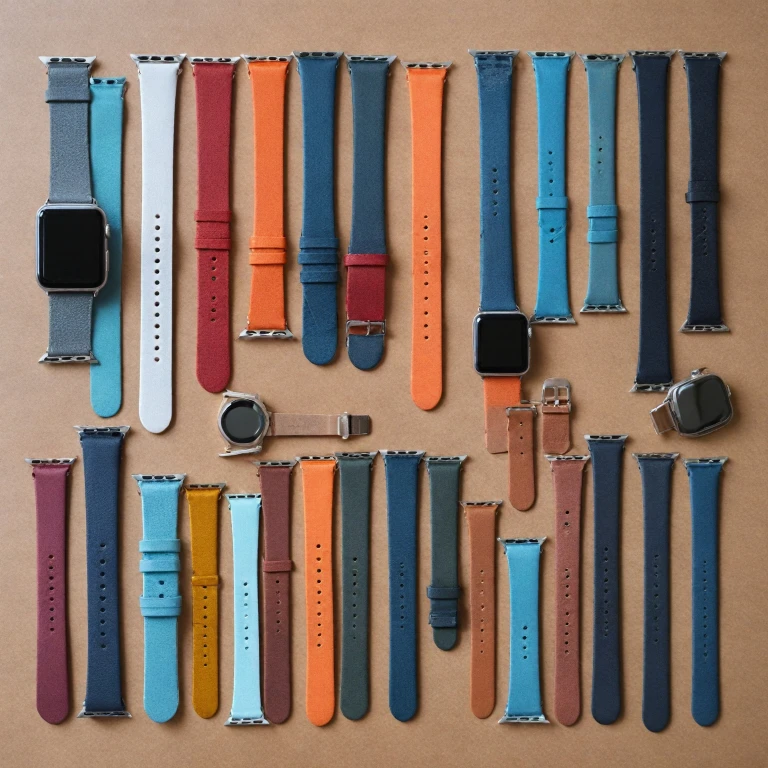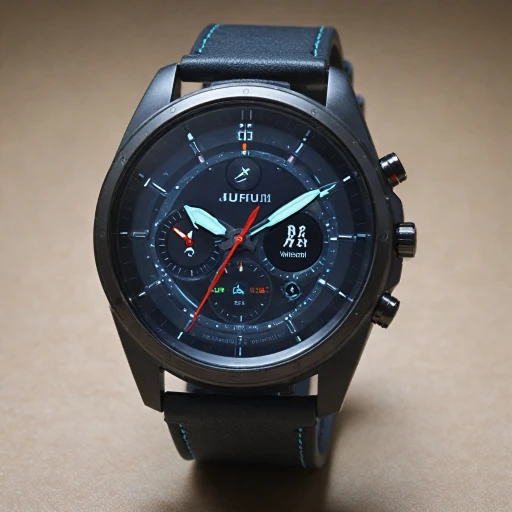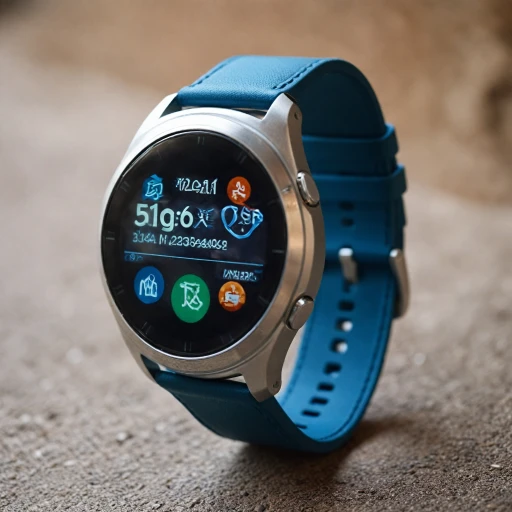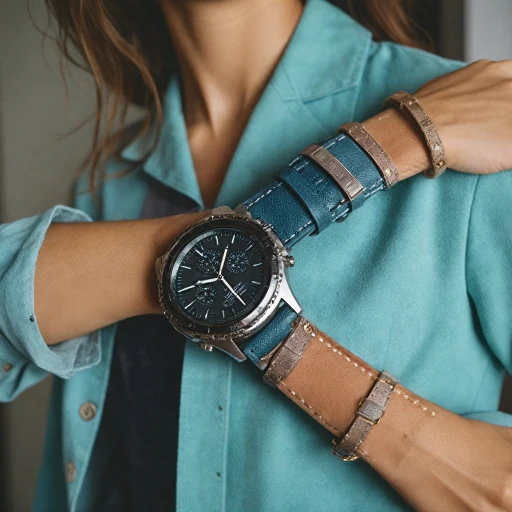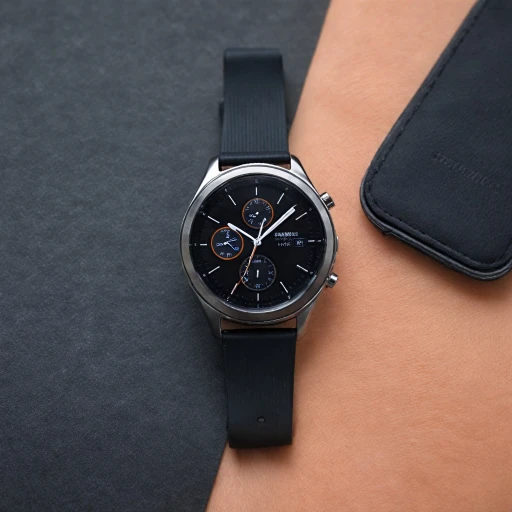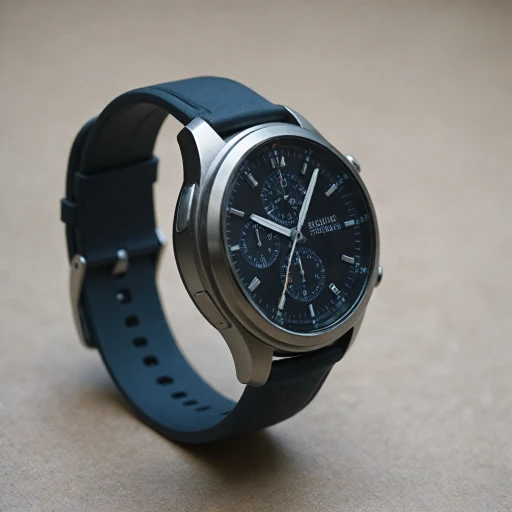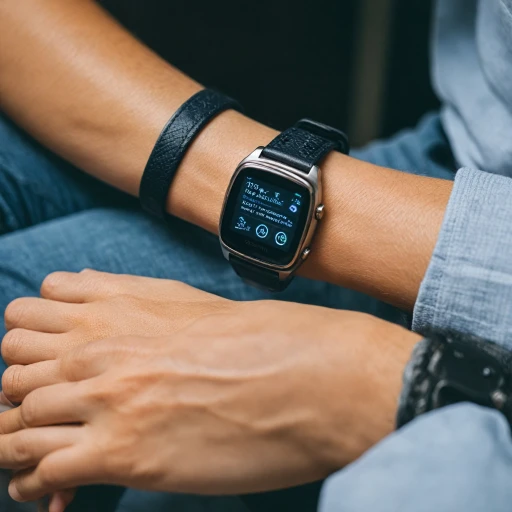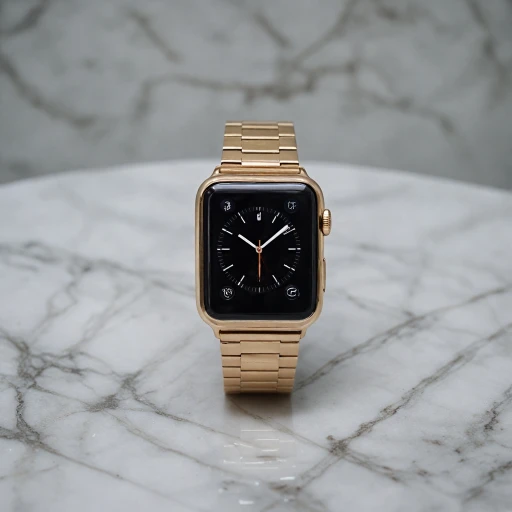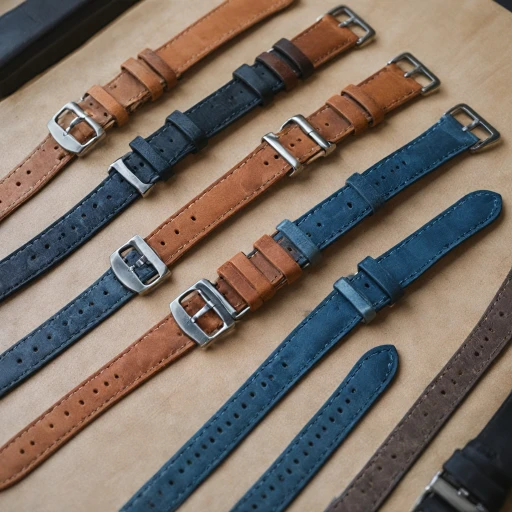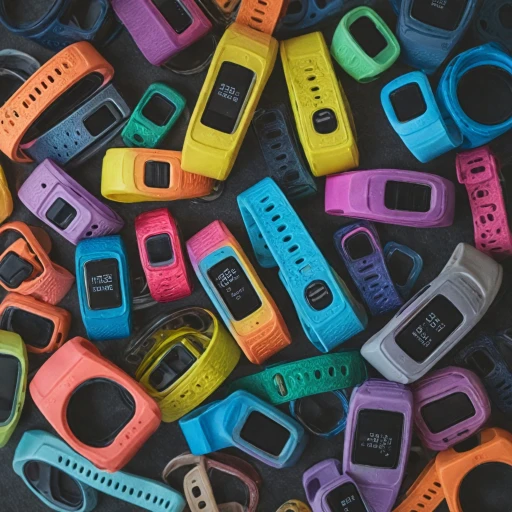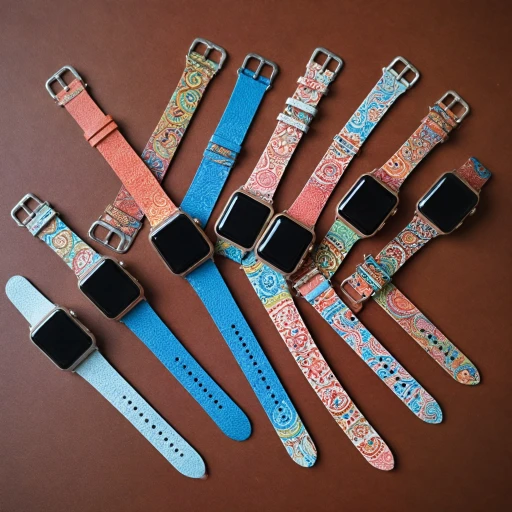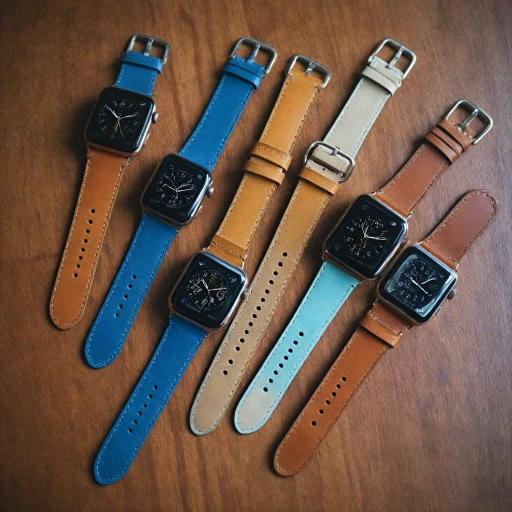Understanding Your Apple Watch Model
Identifying Your Apple Watch Model
Before you dive into changing your Apple Watch strap, it's crucial to know which model you own. Apple offers a variety of models, each with its unique features and compatible bands. Whether you have the Apple Watch Ultra or a classic series, the model will dictate the types of bands that fit.
To identify your watch model, simply flip your watch over and look for the model number etched on the back. This number will help you determine the size and series of your watch. With this information, you can explore the world of smartwatch interchangeable wrist bands that are compatible with your device.
Understanding Band Compatibility
Apple Watch bands are designed to fit specific sizes and models. For instance, a band made for a 38mm watch face won't fit a 44mm model. Make sure to choose the right size to ensure a secure fit. Additionally, some bands, like the solo loop or link bracelet, may offer unique features or styles that cater to different preferences.
Knowing your model also helps in selecting the best style and material for your needs, whether you're looking for a durable sport band for daily wear or a sleek leather option for special occasions. Once you've got your model figured out, you'll be ready to move on to choosing the right strap for your needs.
Choosing the Right Strap for Your Needs
Finding the Perfect Style and Functionality in an Apple Watch Strap
When it comes to choosing the right strap for your Apple Watch, it's essential to consider both style and functionality. Apple offers a wide range of options in various materials, colors, and designs to suit different tastes and requirements.
For those who prioritize comfort and daily wear, a solo loop band could be the perfect choice. Its stretchy, seamless design ensures a snug fit that can be easily slipped on and off. This type of band is ideal for those who lead an active lifestyle.
If you’re in search of versatility, a link bracelet could offer a more sophisticated look, suitable for both professional settings and casual outings. The stainless steel material not only adds a touch of elegance but is also durable for everyday use. Remember to check for an adjustable length to ensure the best fit.
Considering a sport band? These are made from a fluoroelastomer material that's both durable and lightweight, making them perfect for workout enthusiasts. The easy-to-use pin-and-tuck closure ensures the strap stays in place even during intense exercises.
For those who favor classic styles, a leather band can lend a timeless appeal to your watch face. Leather bands come in various shades, allowing you to match them with different outfits effortlessly.
Once you've identified the type of band that best aligns with your style and needs, further explore options on sale for budget-friendly finds. Also, make sure to check user reviews to gather insights on comfort, durability, and ease of use before you decide to buy.
No matter your choice, remember that the watch face remains a central aspect of your style, so ensure that your strap complements it for a cohesive look. As you prepare to change your Apple Watch strap, being aware of your preferences will help you seamlessly integrate your new band into your daily ensemble.
Preparing to Change Your Strap
Essential Preparations for a Seamless Swap
Before diving into the world of Apple Watch straps, a bit of groundwork ensures a hassle-free switch. Here’s how you can make the process smooth and efficient:- Identify Your Watch Model: Verify the exact model of your Apple Watch. Knowing whether it's a Series 1, Series 5, or the latest Watch Ultra assists in purchasing the correct fitting strap. The precise fit ensures comfort and prevents any missteps in the changing process.
- Gather Required Tools: Generally, changing your Apple Watch band doesn’t require additional tools. However, having a soft, clean surface to work on is essential. This prevents scratches and damage to your watch face or other parts. A microfiber cloth can be a simple yet effective companion.
- Choose Your Band Style: With numerous styles like solo loop, link bracelet, and traditional watch bands, selecting a strap that aligns with your lifestyle is crucial. Check our detailed guide on the versatility of arm bands in smartwatches to make an informed decision.
- Check Band Fit: Ensure that the new band is compatible with your watch size. Apple Watch bands come in various lengths and degrees of flexibility. Trying on different options or referring to customer reviews before purchase can aid in finding the most comfortable fit.
Step-by-Step Guide to Changing the Strap
Getting Ready to Swap Your Apple Watch Band
Changing your Apple Watch strap is a straightforward process, but it requires a bit of attention to detail. Whether you're switching to a solo loop or a link bracelet, the process remains largely the same. Here's how to do it:
Step 1: Prepare Your Watch
First, make sure your Apple Watch is turned off. This isn't strictly necessary, but it can prevent accidental taps on the watch face while you're changing the band. Place your watch face down on a clean, soft surface to avoid any scratches.
Step 2: Locate the Band Release Buttons
Flip your watch over and you'll see two small buttons on the back, one at the top and one at the bottom. These are the band release buttons. Press and hold one of these buttons to release the current band.
Step 3: Remove the Current Band
While holding the release button, slide the band to the side. It should easily slide out of the slot. If it doesn't, make sure you're pressing the button firmly enough. Repeat this process for the other half of the band.
Step 4: Attach the New Band
Take your new band and slide it into the slot until you feel and hear a click. This indicates that the band is securely in place. Make sure the band is oriented correctly so that it fits comfortably when worn. Repeat the process for the other half of the band.
Step 5: Ensure a Secure Fit
Once both parts of the new band are attached, give them a gentle tug to ensure they're securely in place. You don't want your Apple Watch band to come loose during the day.
With these steps, you should be able to change your Apple Watch band with ease. If you're having trouble, make sure to review the common problems and solutions in the troubleshooting section. Enjoy the new look and feel of your Apple Watch with your chosen style!
Troubleshooting Common Problems
Troubles you might face when changing your watch band
If you're experiencing challenges while trying to change your Apple Watch strap, here are some common problems and solutions that might help you successfully change your band and get the best out of your device every day.- Release button issues: If the band refuses to slide out after pressing the release button, ensure you're pressing and holding the button properly. The release button, found on the underside of the watch face, needs to be held down while you slide the band aside. A delicate feel and a bit of patience might be required to hear or feel that the band is free to move.
- Stuck or jammed bands: Should the band seem stuck, it could be due to debris or dirt accumulated in the band slots. To resolve this, gently clean the slots with a soft-bristled brush or a dry cloth. Avoid using water or any liquids that could damage the electronic components.
- Ensuring a perfect fit: It's crucial to make sure the band slides into the connector securely and clicks into place; otherwise, you might have an improperly fastened band. If you're using a loop or link bracelet style, double-check that all links or loops engage properly and that the band is secure before wearing your watch.
- Dealing with wear and tear: After frequent changes, some bands may not fit as snugly as they used to, especially for watch bands made from softer materials. In such cases, consider buying a new band or taking advantage of any sales where you can acquire a better quality or style that suits you better.
- Size and compatibility concerns: Make sure the band you buy is compatible with your watch model. If sizing or slide mechanisms differ, revisit your understanding of your watch model and the variety of watch bands accessible to purchase for a seamless combination.
- Accidental damage: Even with care, mishaps might occur, leading to scratches or marks on the band or watch face. Though most Apple Watch bands are designed for daily wear and are quite resilient, consider investing in a protective case for extra assurance.
Maintaining Your Apple Watch and Strap
Preserving the Integrity of Your Apple Watch Face and Bands
To keep your Apple Watch and its watch bands in pristine condition, it's essential to invest some care into maintenance practices. Caring for both the watch face and the strap will ensure your Apple Watch maintains its style and functionality over time.Regular Cleaning Routine
- Watch Face: Clean the watch face gently with a non-abrasive, lint-free cloth to avoid scratches. A slightly damp cloth can be used for tougher spots, but ensure it is not too wet.
- Watch Bands: Different materials require specific cleaning methods. For instance, leather bands can benefit from being wiped with a damp cloth and allowed to air dry, while silicone bands (such as the solo loop) can be rinsed under water. Always ensure bands are completely dry before reattaching them to prevent moisture damage.
